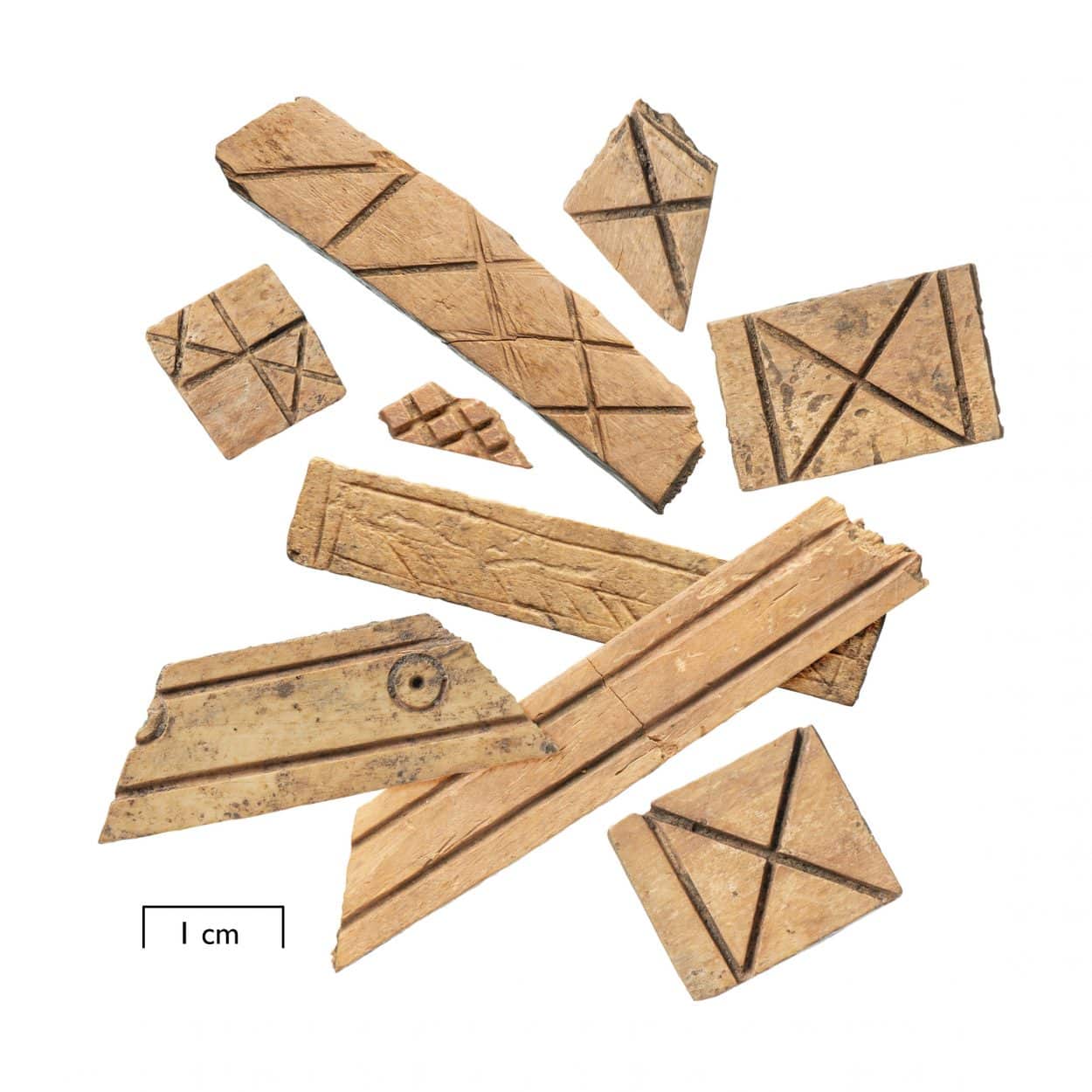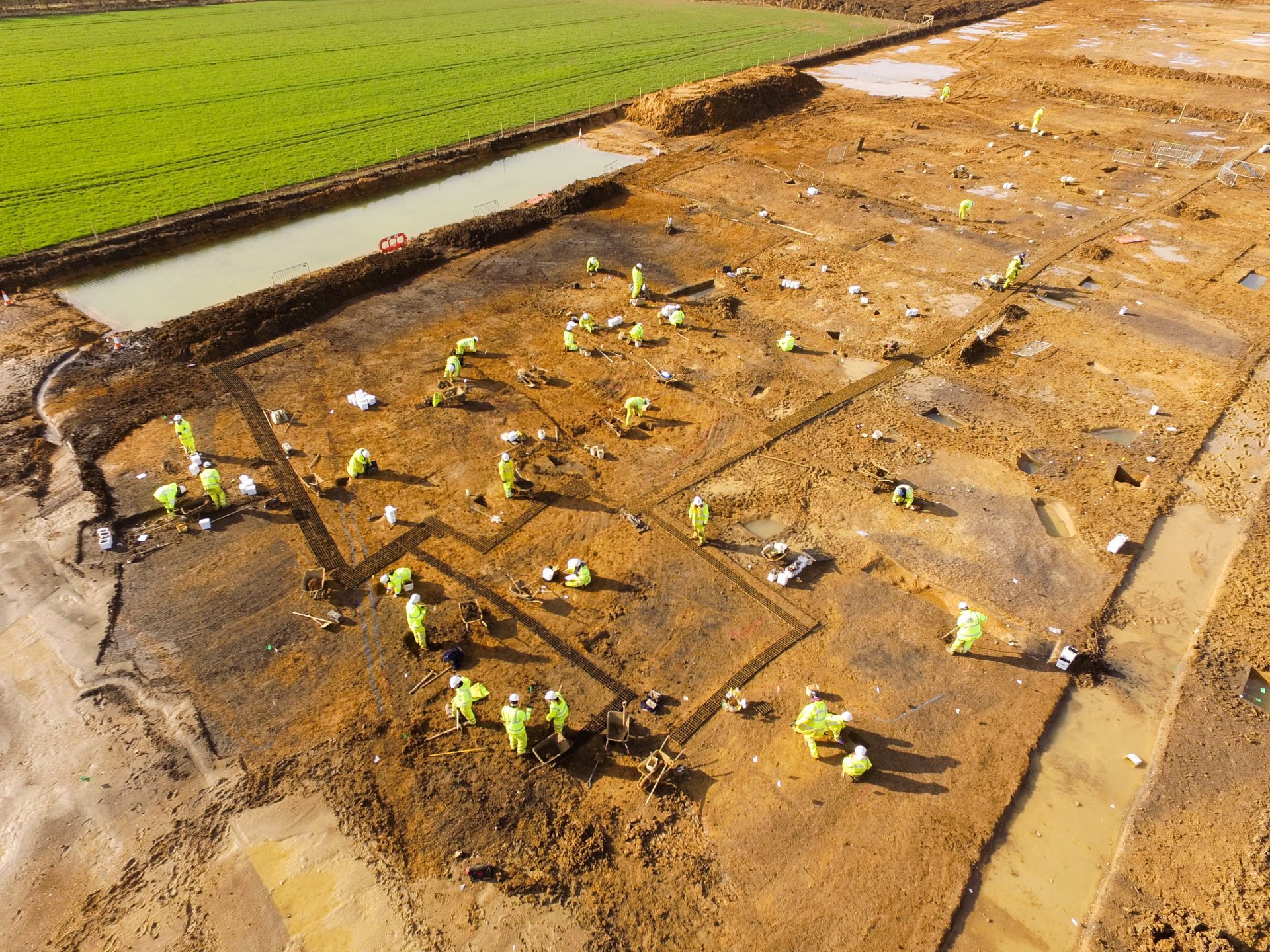Archaeologists from MOLA have been investigating a collection of archaeological finds from the Roman period in Cambridgeshire, England, suggesting that the area was a centre for skilled craft workers.
Over 300 fragments of bone and antler working waste were recovered from a small settlement near Alconbury, interpreted to be from a carpenter’s workshop, where decorated inlay or veneer were produced to adorn wooden boxes and furniture.
During the Roman period, materials such as red deer antler, ribs, jawbones and shoulder blades of large domestic animals such as cattle and horses were turned into finished products.
The pieces of bone and antler were sawn into thin (2-3 mm thick) strips of varying width. These were then smoothed, decorated with repeated geometric patterns, and finally cut into different sections of the desired length. Among the materials found at Alconbury are examples of all these different stages of work. These include stunningly detailed finished pieces which might have been casually lost, were surplus to requirements, or were intentionally discarded when they broke during shaping or a flaw was recognised.

The strips of bone were decorated with a variety of patterns including parallel lines, saltires (diagonal crosses), cross hatchings and rows of circles with inscribed dots. These incised designs might have been filled with black or coloured wax, creating a stronger and vibrant contrast with the white of the bone.
Michael Marshall, Senior Finds Specialist at MOLA, commented: “Not only were these inlays and veneers used to decorate wooden objects, they were also made with a similar range of tools and it is likely that they were made by the same craftspeople. The wooden elements don’t survive, so we can only guess at the full range of products made locally, but the inlay/veneer suggest that local artisans were involved in creating elaborate domestic items.”
The Alconbury material can be dated to the late Roman period, most likely between the 4th and early 5th century AD (ca. AD 301-425). The most curious thing about these inlays and veneers is that they were discovered in a relatively simple rural settlement. Usually, evidence for this kind of bone and antler working comes from towns or Roman villas. Yet, there is no other evidence suggesting the presence of a high-status domestic structure at Alconbury.
Whilst the finds are not sufficient to prove the presence of a permanent specialist furniture workshop, they indicate there were skilled craftspeople at Alconbury in the Roman period. These individuals might have made these kinds of objects seasonally, on commission, or alongside other kinds of furnishings. The customers for the more extravagant objects need not have been at Alconbury itself, and archaeologists speculate that these products were sold elsewhere, such as at the nearby Roman town of Godmanchester, or another wealthier rural site in the vicinity.
Header Image Credit : MOLA





